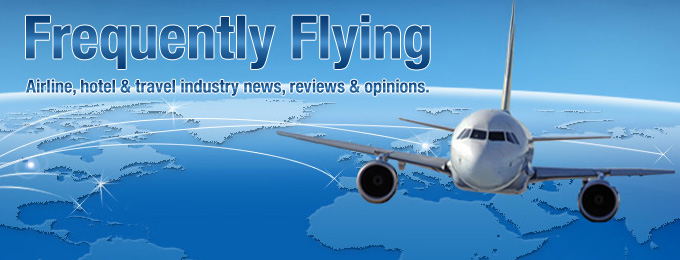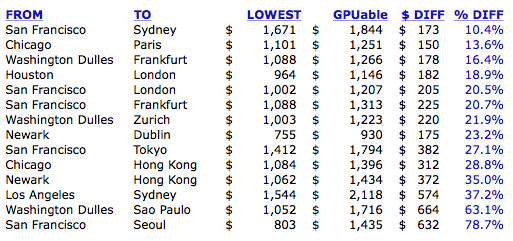My travel goals on United have changed this year due to several factors, including a move to a more expensive cost per mile (CPM) originating airport and the increasing likelihood that all U.S. airlines will add some type of elite status revenue requirement to their frequent flier programs.
My goal on United this year is to simply hit million-miler status and forgo my annual obsession with achieving Premier 1K status. With what I just booked today, I’m only about 4,100 miles away and I’m certain I’ll hit it mid-year.
And as I’m getting older and my time at home is more important to me, I’m looking to do it in the most comfortable and efficient manner. Often, that means spending more, as I did on my recent first class trip from Boston to Tokyo.
Also, I don’t want to waste all of my Global Premier Upgrades (GPUs) on domestic travel this year, so I searched today for the best deal on another international trip where upgradable coach-to-business seats were available at the time of booking. United, if you don’t know, requires the purchase of at least a W-fare to upgrade most international flights and I thought I’d share some of that research.
Keep in mind the fares below are exclusively for a specific time period (April 10-17), and there are often many other factors which affect the disparity between the cheapest coach ticket and upgradable fare. But I still think it’s a fascinating reveal of sorts, showing how widely the differences can vary.
What stood out to me was the rather insignificant fare differential on the San Francisco to Sydney flights. Last year I paid nearly $900 more for a roundtrip W-fare to upgrade my LAX to Sydney ticket in July, a fairly off-peak time-frame for U.S. to Australia travel. Los Angeles came in at a difference of $574, but still a bargain over what I ended up paying.
And one of United’s easiest routes to redeem a GPU on (San Francisco to Seoul) ended up being the highest fare differential in the markets I checked.
I was also a bit surprised that the ultra long-haul Hong Kong flights from Chicago and Newark didn’t have a greater disparity, but then again… buying only a W-fare on those routes would do little to beget an upgrade.
I found a route that worked for me and I’ll happily rack up upwards of 13,000 butt-in-seat miles to add to my lifetime status in BusinessFirst comfort, paying a $350 premium for the W-fare. I’ll have a full report on my return.
What’s the most you’ve paid over the cheapest coach ticket? Did you get the upgrade?
Related posts:
Analysis of United’s Lowest Coach vs. Upgradable Fares Using a Systemwide Upgrade
Looking Back at 2012 and What’s In Store for 2013
Flight Review: United Airlines Global First Class, San Francisco to Tokyo
Flight Review: United Airlines BusinessFirst, Los Angeles to Sydney



I ended up paying about £200 more for a LHR-SFO-SEA ticket in W, over the cheapest fare.
Of course you analysis of the SFO-SYD fare is correct, but it’s VERY hard to get an upgrade on that route.
What is your basis for stating there is “the increasing likelihood that all U.S. airlines will add some type of elite status revenue requirement to their frequent flier programs?
DL did it, but as far as I know, no one else has… so what is causing the increasing likelihood or is it more the need for drama?
@Timmer1001: It’s not hype. It’s going to happen. Delta secured the push towards it and other airlines (American, United) will fall in line shortly.
Indeed, a W fare is not necessarily an upgrade. For SFO – FRA or SYD might need and E fare, at least. It is now questionable whether GPUs are useable.
…I should modify, at least for the general traveller. For the business traveler that buys late, more expensive tickets anyway, they probably are.
The reason for the change in fare difference between this data and when you went to SYD may be because the price of W fares is less variable. In my own analysis, I found that the cheapest fare often changed quite a bit depending on season and demand. The W fares were more stable, although they do drop a little during off-peak periods.
I have been a Million Miler on United for 5 years (close to 2 million). Its no great shakes. Upgrades remain difficult to obtain, especially on international travel. The only ostensible benefit is, for the time being, United renews your status yearly as a Gold flier regardless of how many miles you have flown. My loyalty to United dates back to 1985. I have tried, unsuccessfully, to explain to them the loyalty of Million Milers versus the person who attains 1K status possibly, only once. The 1K benefits are far superior to the Million Mile benefits. It falls on deaf ears.